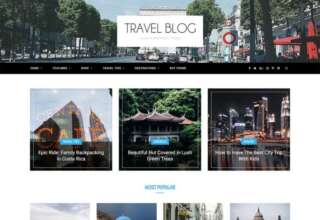
The Christmas and New Year holidays are behind us, but China and a couple of other countries in Asia are now gearing up for the Lunar New Year holiday.
The Chinese New Year, or Tet in Vietnam, is the biggest holiday on the calendar over here. It triggers the largest human migration in the world as millions of Chinese working in the metropolises of Shanghai, Beijing, Shenzhen, Guangzhou, and other buzzing cities head back home to visit their families.
I’ll be leaving town, too, which got me thinking about the tech I’ll be bringing with me. I’m fortunate to do plenty of international travel each year, mainly because flights from Hong Kong are cheap and there are a number of amazing destinations within a couple of hours’ flight. (Japan, Taiwan, Korea, Vietnam, Cambodia, Laos, Thailand, Myanmar, Philippines, Singapore, Malaysia, I could go on…)
I’ve tested several different products and apps over the years, but there are a few I rely on every time I head to the airport. While they work for me, I’m aware that technology is inherently personal so my recommendations might not fit your exact use case. Still, I hope you find something useful and we’d love to hear more suggestions in the comments.
A quick disclaimer: I usually travel with the iPad Pro (sometimes the 12.9”, sometimes the 11”, sometimes both), a MacBook Pro 15”, and, of course, an iPhone and Apple Watch. Everything on this list I own or previously owned.
Finally, I don’t go into any detail about products designed to speed you through TSA checkpoints at US airports. Overseas airports are usually a bit more lenient, and many move fairly quickly through security already.
So, without further ado…
Carry-on for Apple Gear
First up is luggage. I have no recommendations for checked luggage, other than, please, don’t buy anything that is plain black. The vast majority of luggage is black, and you’ll save yourself some time if you use a bag that is colorful or has some other distinctive style.
For carry-on, nothing beats the Air Porter by Waterfield.
I have purchased many bags by Waterfield over the years, and I absolutely love them. They’re made in the USA, well designed, carefully constructed to hold Apple gear and look great without being pretentious.




I opted for the black version with “Air Caddy”, a removable pouch that holds cables and dongles and other small items you might use during the flight. When you get to your seat, the idea is to remove the pouch and put it into the seat pocket in front of you for easy access.
The bag is designed for 15” laptops, so if you have a 13” or smaller this might be a bit too big. There is a padded slot at the back for the MacBook Pro, and a separate compartment for an iPad Pro (it fits the 12.9” perfectly).
The main compartment is roomy, with a number of pouches to keep things separate and easy to access. This is where I store some handy items for use on board (a bottle of water, headphones, magazines, whatever). Even when the bag is full, it never seems too bulky and fits perfectly under the seat. It also has a strap on the back that attaches to (hopefully colorful) roller luggage for convenience.
Waterfield’s bags aren’t cheap, but they are rugged, durable, and the best laptop-grade carry-on I’ve come across. The fact they design bags specifically to fit Apple products is a bonus.
Air Porter
Price: $359 ($379 with add-on Air Caddy)
Link: Waterfield
iPad Pro Keyboard and Stand
I like to have a keyboard for the iPad Pro in my bag in case I need it, but it should be very easily removable if I want to use the iPad in tablet mode. There’s no shortage of keyboards out there, with more coming soon. Each one seems to be another creative take on how best to use the iPad as a productivity tool.
I picked up the Apple Smart Keyboard Folio when I bought the 12.9” iPad Pro, and it’s been serviceable so far — it’s not flashy, but gets the job done. I previously used Studio Neat’s Canopy, which is a combination Magic Keyboard case and iPad stand. The concept was good, but sometimes it felt a bit flimsy, as if made out of cardboard. If it ever got wet, it felt like it could disintegrate.
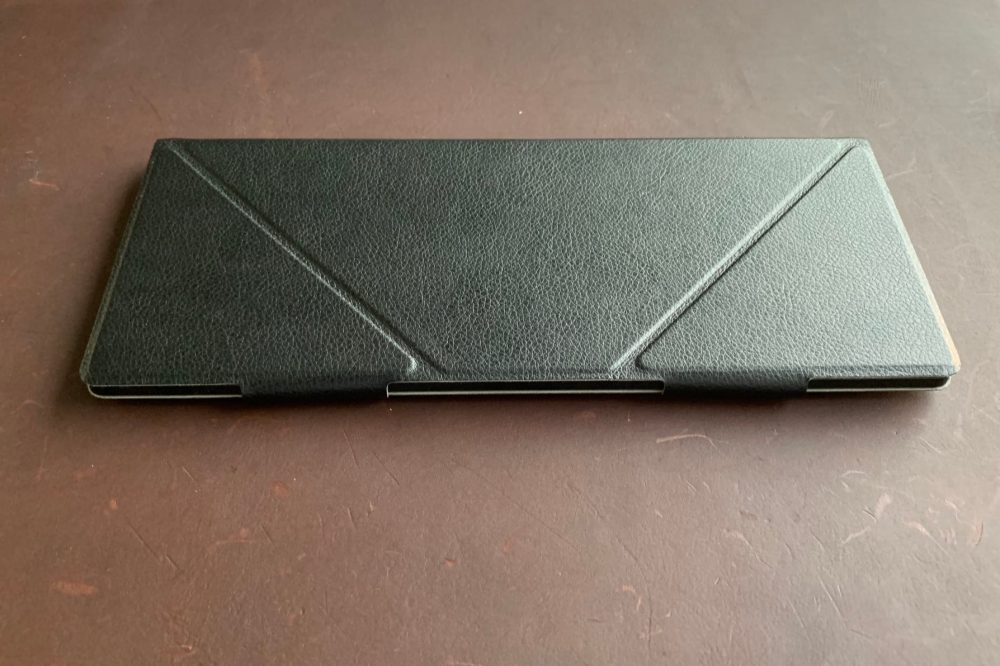
I can’t wait to test out the latest version of this Brydge keyboard (shipping spring), but until then I’ve been quite pleased with the Fintie Carrying Case and Standing Cover for the iPad Pro. It takes the same idea as Studio Neat’s product but improves on it by making the case a little nicer and more durable.
This is how it works: There is a little plastic frame inside the Fintie case that fits the Apple Magic Keyboard. After you snap the keyboard into place, it stays there snugly. The black leather case doubles as a makeshift iPad stand when opened, with the iPad connecting to the keyboard via bluetooth. When you’re done with it, the case wraps around the keyboard and you can safely toss it back in your bag. I use this thing a ton, as it’s compact and fits perfectly on small airplane table trays.
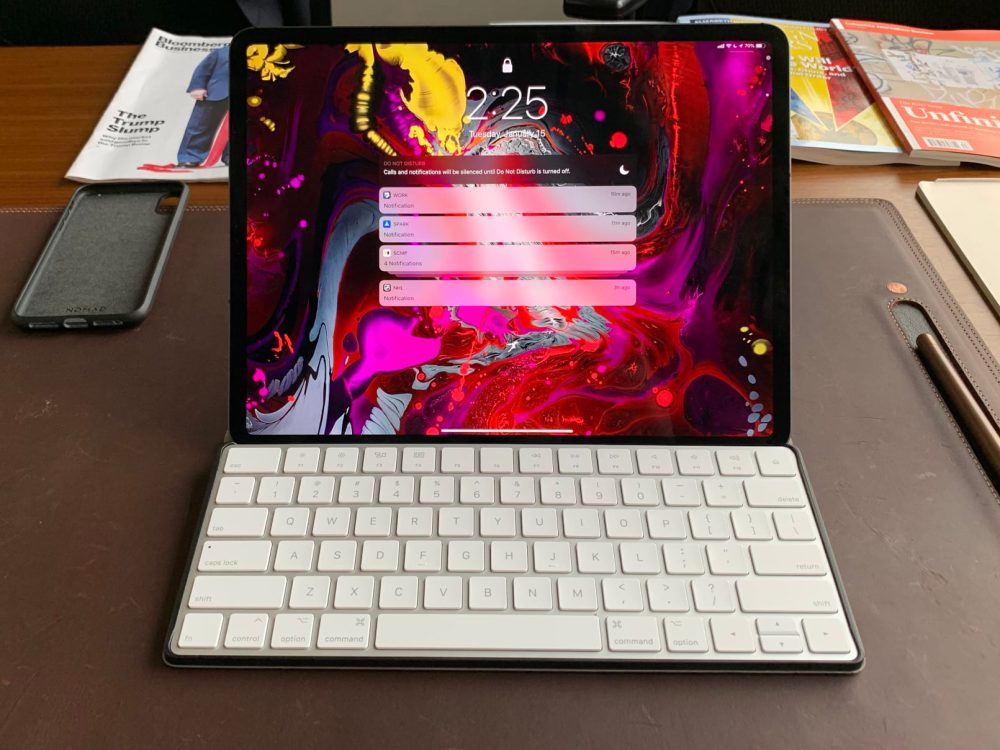
The best part, in my view, is having the keyboard completely separate from the iPad Pro when it’s not needed. Apple has done an incredible job making the iPad Pro thin, light, and a pleasure to hold. If a keyboard is clinging to it, especially when it’s not being used, it makes the iPad bulkier and slightly less appealing. I realise this is a total #firstworldproblem, but the Fintie case does an admirable job of turning the iPad into a productivity machine when needed, and getting out of the way when it’s not. Also, unlike the Keyboard Folio, it’s a treat to use a full-on, quality, desktop-class keyboard with the iPad.
Fintie Carrying Case for Apple Magic Keyboard
Price: $15.99
Link: Amazon
Chargers, Dongles, and Cables
The goal here is efficiency — chargers and cables that are versatile and handle more than one device at a time.
If you’re doing international travel, you’ll have to think about power adapters. Apple sells a World Travel Adapter Kit that includes seven different plugs that can be added to an Apple wall charger. Twelve South sells another with five plugs and a couple of bonus USB-A outlets.
The Apple 87W USB-C charger is my go-to charger for trips. It can charge a MacBook Pro, iPad, or iPhone if any of them are low on power and you have access to an electrical outlet. In a hotel room, I will plug the MacBook Pro into it and then charge the other devices from the computer if there aren’t other outlets around. (I will occasionally add a second 87W charger in my checked luggage).
I have managed to collect several different plugs over the years, so I travel with a spare UK one (also used in Hong Kong) and US one (also used in Canada). Many countries use one of these two, so I’m mostly covered off. If I’m going somewhere else, I’ll add in a plug from the Apple kit. Wherever you happen to be headed, make sure to look up that country’s electrical outlets in advance.
Apple is pushing everyone to USB-C, but the world still runs on the traditional USB-A. I always have a couple of USB-C cables to charge my MacBook Pro and iPad, as well as a USB-C to Lighting cable for the iPhone. But those cables won’t help much if you find yourself stuck on an airplane or in an airport with your devices nearly out of juice.
USB-A ports are everywhere, from trains and airline lounges to restaurants, airport gates and even at your seat on board. I always make sure to have a USB-A to Lightning cable and USB-A to USB-C cable purely for charging when out and about. These can also double-up as charging cables for the Mophie charger I mention below.
Apple 87W USB-C Charger
Price: $79
Link: Apple
Cable Matters USB-C 3.1 Gen 2
Price: $12.99
Link: Amazon
Cable Matters USB-C to USB-A 3.1 Gen 2
Price: $9.99
Link: Amazon
Battery Power
This one is easy. The Mophie Powerstation USB-C 3XL Battery is excellent. It’s a 26,000mAh battery with a fast charging USB-C port and a USB-A one as well, for good measure. This can charge an iPhone XS Max multiple times and even provides extra juice to my MacBook Pro on occasion.
There is a litany of backup batteries out there, but this checks the most boxes: it’s high capacity, portable, supports USB-C and USB-A, and fits easily into a side pocket or travel pouch.
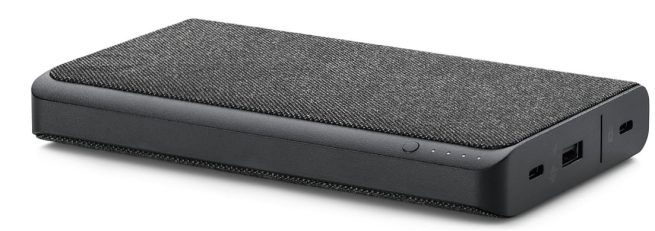
Mophie Powerstation USB-C 3XL Battery
Price: $199.95
Link: Apple
iPhone and Apple Watch Charger
The Apple Watch Series 4 has excellent battery life, so unless you’re really doing an around-the-world journey it should last until you reach the hotel room or hostel. That’s when you can plug in your Apple Watch charger.
These days I’m traveling with the Base Station by Nomad. It’s a wireless Qi charger for the iPhone 8 and above with a little watch charging puck built into it. The benefit is only needing one electrical outlet to charge two devices. Nomad makes some classy, minimalist products that are also super practical.
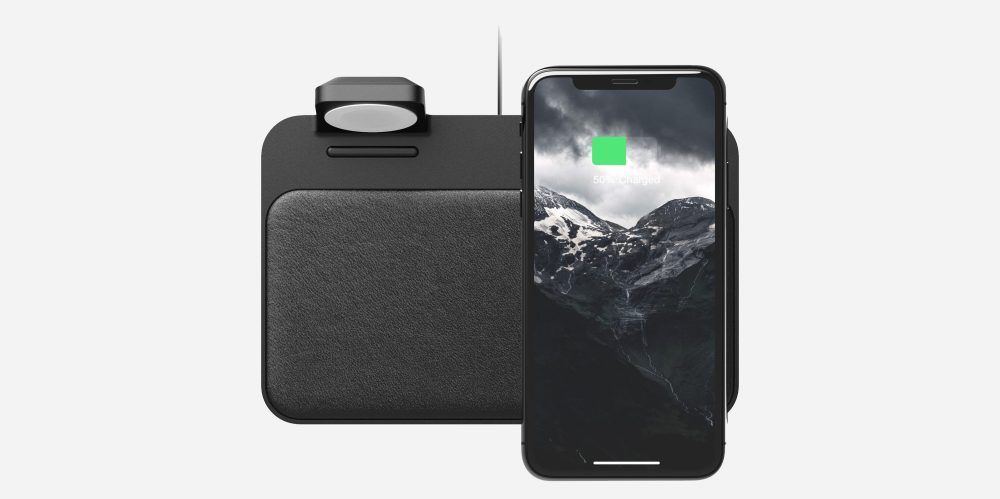
I don’t use a specific backup battery for iPhone, though I’d be remiss if I didn’t mention the new Smart Battery Case. With electrical outlets and USB-A ports relatively plentiful, and the Mophie charger when they’re not, the iPhone is covered off for me.
Base Station
Price: $119.95
Link: Nomad
(I also just recently purchased the Pod Pro, which is kind of the same but without the Qi charger and slightly more compact. I’ll probably take it with me instead of the Base Station over the Chinese New Year holiday.)
Headphones
Everybody has an opinion on headphones, so I don’t want to get into the weeds on it. If they are being purchased purely for travel, though, I would suggest battery life and noise cancellation are the two criteria that are among the most important to consider.
I have tested, over the last few years, the Bose QuietComfort 35, Sony WH1000XM3, and Beats Studio 3. I think Bose has the best active noise canceling, Beats the advantage in terms of integration with the iPhone/iPad (obviously, thanks to the W1 chip) while the Sonys may be the best of the three overall. This is highly subjective though, and also depends whether you lean more towards podcasts or music (I split about 50-50, probably).
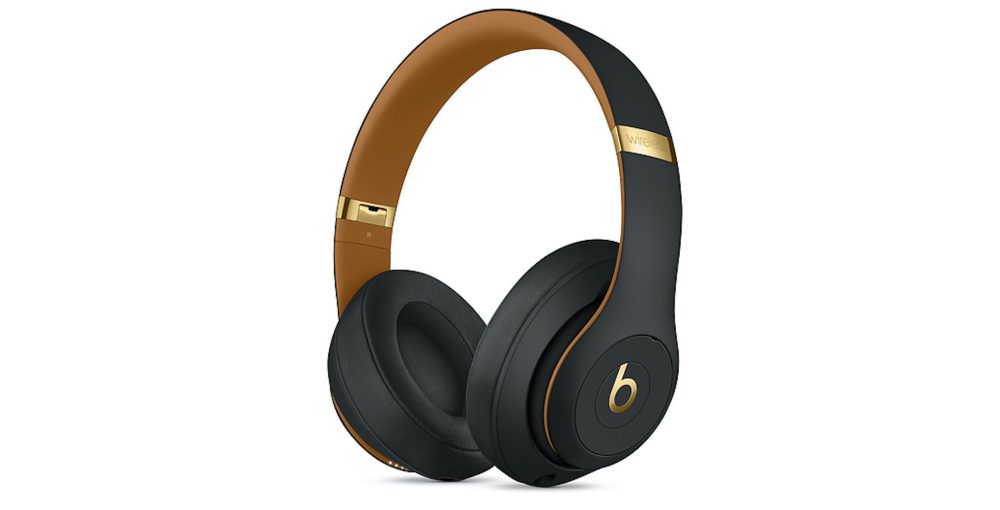
I’m using the Beats Studio 3 as my primary travel pair right now, but I ordered the Bang and Olufsen H9i earlier this week after reading a glowing review, so I intend on having those in my bag by the time I’m heading to the airport.
Some devices, such as the aforementioned Beats, still use Micro-USB cables, so I usually toss one of those in my bag as well.
Beats Studio 3 (Skyline Collection)
Price: $349.95
Link: Amazon
Bang & Olufsen H9i
Price: $385.98
Link: Amazon
SIM Management
It’s common to swap out SIMs when you travel to different countries, leaving you with tiny chips that almost always get lost. Even trying not to lose one SIM can sometimes be a challenge.

The iPhone XS and XS Max now have an e-SIM and room for a physical SIM, opening up a spot if you use the e-SIM with your home carrier. (Unless you are in Mainland China or Hong Kong, where both SIM slots are open for physical SIMs). Still, chances are you’ll be popping out your SIM and swapping it at some point, so it’s helpful to put them in a safe spot – like an aluminum holder.
The BlueCraft Slim Nano SIM Card Aluminum Holder is basic but extremely helpful if you’ll be swapping SIMs. It holds 12 nano-SIM cards in total and comes equipped with a SIM eject pin. It closes with a satisfying snap so won’t suddenly open up unexpectedly in your bag.
BlueCraft Slim Nano SIM Card Aluminum Holder
Price: $9.99
Link: Amazon
Other Stuff
There are a few other things to note. If I’m going to be using my Sony a7R Mark III, I’ll bring along the Sandisk Extreme Pro SD USB-C Card Reader. It works well with both the MacBook and iPad Pro (now with the ability to import images directly into Lightroom Mobile through Adobe’s new Siri Shortcut).
If I’m bringing the a7R Mark III, I also often bring my dedicated camera bag: ONA – Price Street. It’s stylish, durable, doesn’t make you look like a tourist, and comfortably holds a camera, a couple of lenses, and an iPad. This is, by far, the best camera bag I’ve ever owned, and have no intention of looking for another one unless I lose this one or it gets destroyed somehow. It’s made with full-grain leather and is perfect for walking around a city or spending the day out and about.
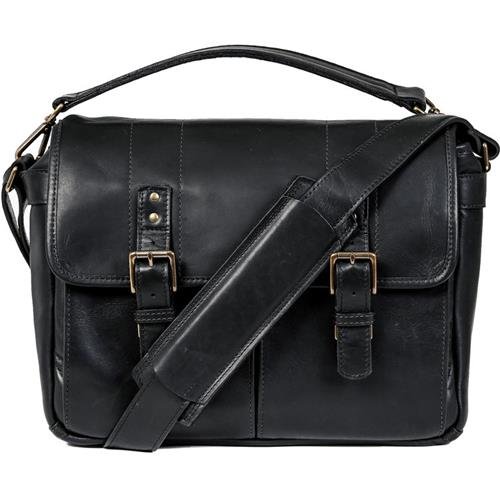
Little organizers for cables, chargers and dongles seem to be gaining in popularity. They seem to be more of a luxury though, as the Air Porter is already divided up multiple ways to keep things organized. That said, I have the Twelve South BookBook CaddySack ($49.99) and Pad & Quill Techfolio Classic Cord Organizer ($79.95). Pad & Quill just announced two new versions of the Techfolio which I also hope to test.
The Kindle Oasis (international version) is usually in my bag too, but more for aspirational reasons. I love reading, and spend hours in news and RSS apps. Books – particularly novels – haven’t been getting the attention they deserve. The Kindle gets a spot though — just in case.
Travel Apps
There are three apps, in particular, that I rely on every time I travel.
TripIt (Free, In-App Purchases) has become the standard for so many business travelers, family vacations, or wondering nomads. After you receive flight or hotel reservation confirmations, simply forward them to a TripIt email address and it will parse the details and add it to your itinerary. It’s super handy to have all confirmation numbers, departure times, hotel addresses, phone numbers and that kind of thing in one place. If you want to get serious about it, TripIt has a $49 per year plan with a whole host of other services.
App in the Air (Free, In-App Purchases) is the single best flight tracking app I’ve come across. It syncs with TripIt, but using TripIt isn’t required. App in the Air handles absolutely everything pertaining to your flight, even providing historical information about your route’s on-time performance and airline phone numbers in case you need assistance. It’s particularly accurate at sending notifications to the Apple Watch about any delays or gate changes and even provides you with waiting times at security and the exact carousel where you can claim your bags. It will also animate your entire year of flying each December, which is a nice touch.
Finally, there’s LoungeBuddy (Free). LoungeBuddy is the greatest and most comprehensive global directory of airport lounges, including some airports like those in Yangon, Male, and Danang. You begin by ticking the boxes of any credit cards you hold that might provide lounge benefits, as well as any status you have with airlines. Then it will list the lounges you are eligible to visit, either for a fee or completely free. In some cases, you can buy lounge access through the app itself. There is a very active community on LoungeBuddy with loads of reviews, directions to lounges, and photos to help weary travelers find the best lounge in an unfamiliar airport.
[“source=9to5mac”]







